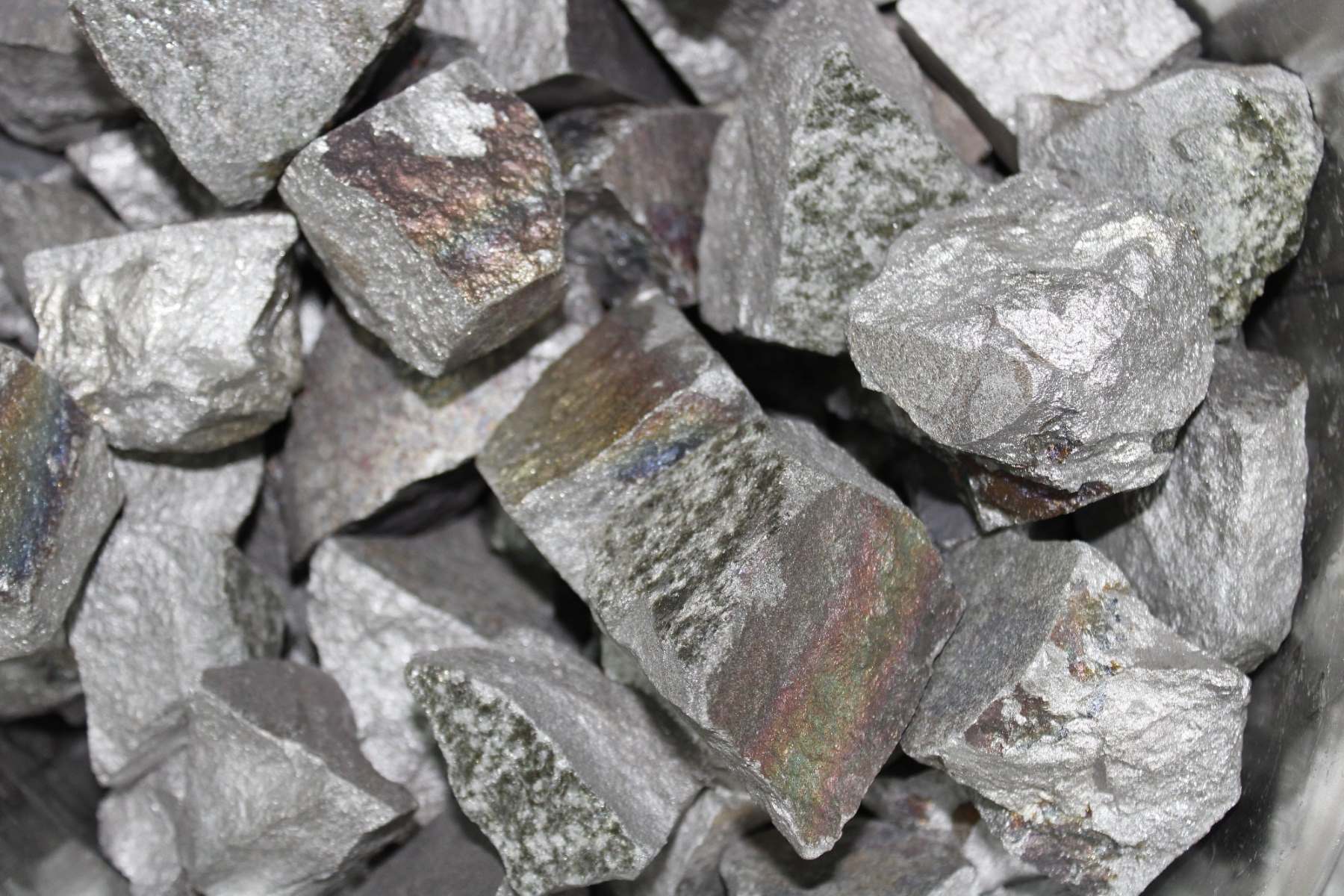
Ferromolybdenum might sound like a mouthful, but it's a crucial alloy in the world of metallurgy. What is ferromolybdenum? It's an alloy made from iron and molybdenum, typically containing around 60-75% molybdenum. This alloy is primarily used to add molybdenum to steel, enhancing its strength, toughness, and corrosion resistance. Imagine skyscrapers, bridges, and pipelines—they all rely on the unique properties of ferromolybdenum to stand tall and strong. From its production process to its various applications, ferromolybdenum plays a vital role in modern construction and manufacturing. Ready to learn more? Let's dive into 35 fascinating facts about this incredible alloy!
Key Takeaways:
- Ferromolybdenum is a strong alloy used in steelmaking, making steel more durable and resistant to wear and tear. It's essential for kitchenware, medical instruments, and even military vehicles.
- The future of ferromolybdenum looks bright, with potential for new, sustainable alloys and applications in renewable energy. It's also a fun fact that molybdenum, the key component, was discovered in 1778!
What is Ferromolybdenum?
Ferromolybdenum is an alloy that combines iron and molybdenum. It is primarily used in steelmaking to enhance the strength, hardness, and corrosion resistance of steel. Let's dive into some fascinating facts about this essential alloy.
-
Ferromolybdenum typically contains 60-75% molybdenum, with the rest being iron and trace elements.
-
The alloy is produced by reducing molybdenum oxide with iron in an electric arc furnace.
-
Molybdenum, the key component, is a silvery-white metal known for its high melting point and strength.
-
Adding ferromolybdenum to steel improves its resistance to wear and tear, making it ideal for heavy-duty applications.
Uses of Ferromolybdenum
Ferromolybdenum has a wide range of applications, especially in industries requiring durable and resilient materials.
-
It is used in the production of stainless steel, which is essential for kitchenware, medical instruments, and construction materials.
-
The alloy is crucial in making high-speed steel, used in cutting tools and drill bits.
-
Ferromolybdenum enhances the performance of cast iron, making it more robust and less prone to cracking.
-
It is also used in the aerospace industry for manufacturing aircraft parts that can withstand extreme conditions.
Production and Extraction
Understanding how ferromolybdenum is produced and extracted can shed light on its importance in various industries.
-
Molybdenum is primarily extracted from molybdenite ore, which is found in countries like the United States, China, and Chile.
-
The extraction process involves roasting molybdenite to produce molybdenum oxide, which is then reduced with iron to create ferromolybdenum.
-
Recycling plays a significant role in the production of ferromolybdenum, as scrap steel containing molybdenum can be reused.
-
The production process is energy-intensive, requiring high temperatures to achieve the necessary chemical reactions.
Benefits of Ferromolybdenum
The benefits of using ferromolybdenum in various applications are numerous and significant.
-
It increases the tensile strength of steel, making it more durable and long-lasting.
-
The alloy improves the weldability of steel, allowing for more precise and reliable construction.
-
Ferromolybdenum enhances the corrosion resistance of steel, protecting it from rust and other forms of degradation.
-
It also improves the heat resistance of steel, enabling it to perform well in high-temperature environments.
Environmental Impact
Like any industrial material, ferromolybdenum has an environmental footprint that needs to be considered.
-
Mining molybdenum can lead to habitat destruction and water pollution if not managed responsibly.
-
The production process generates greenhouse gases, contributing to climate change.
-
However, the alloy's durability means that products made with ferromolybdenum often have a longer lifespan, reducing the need for frequent replacements.
-
Recycling ferromolybdenum-containing materials can mitigate some of the environmental impacts associated with its production.
Historical Context
Ferromolybdenum has a rich history that dates back to the early 20th century.
-
The alloy was first produced in the early 1900s to meet the growing demand for stronger and more resilient steel.
-
During World War II, ferromolybdenum played a crucial role in the production of military equipment and vehicles.
-
The post-war industrial boom saw a significant increase in the use of ferromolybdenum in various sectors, from construction to manufacturing.
-
Today, the alloy remains a vital component in modern engineering and technology.
Future Prospects
The future of ferromolybdenum looks promising, with ongoing research and development aimed at improving its properties and applications.
-
Advances in metallurgy could lead to the creation of new ferromolybdenum alloys with enhanced performance characteristics.
-
The growing demand for sustainable materials may drive innovations in the recycling and production processes of ferromolybdenum.
-
Emerging technologies, such as 3D printing, could open up new possibilities for using ferromolybdenum in manufacturing.
-
The alloy's role in renewable energy infrastructure, such as wind turbines and solar panels, is expected to grow.
Fun Facts
Let's wrap up with some fun and lesser-known facts about ferromolybdenum.
-
Molybdenum, the primary component of ferromolybdenum, is named after the Greek word "molybdos," meaning lead, due to its similar appearance.
-
The element molybdenum was discovered in 1778 by Swedish chemist Carl Wilhelm Scheele.
-
Ferromolybdenum is often used in the production of armor plating for military vehicles.
-
The alloy's unique properties make it a popular choice for manufacturing oil and gas pipelines.
-
Molybdenum is also an essential trace element for human health, playing a role in various biological processes.
-
The world's largest producer of molybdenum is China, followed by the United States and Chile.
-
Ferromolybdenum's high melting point makes it ideal for use in extreme environments, such as space exploration.
Ferromolybdenum's Impact on Modern Industry
Ferromolybdenum plays a crucial role in modern industry. This alloy, combining iron and molybdenum, enhances the strength, durability, and corrosion resistance of steel. These properties make it indispensable in construction, automotive, and aerospace sectors. Its ability to withstand extreme temperatures and harsh environments ensures the longevity of structures and machinery.
Moreover, ferromolybdenum's contribution to energy efficiency can't be overlooked. By improving the performance of pipelines and power plants, it supports sustainable practices. The mining and production processes, though complex, are vital for maintaining a steady supply of this valuable material.
Understanding ferromolybdenum's significance helps appreciate the advancements in technology and infrastructure. As industries evolve, the demand for high-quality alloys like ferromolybdenum will only grow. This alloy's impact on our daily lives, though often unseen, is profound and far-reaching.
Frequently Asked Questions
Was this page helpful?
Our commitment to delivering trustworthy and engaging content is at the heart of what we do. Each fact on our site is contributed by real users like you, bringing a wealth of diverse insights and information. To ensure the highest standards of accuracy and reliability, our dedicated editors meticulously review each submission. This process guarantees that the facts we share are not only fascinating but also credible. Trust in our commitment to quality and authenticity as you explore and learn with us.


